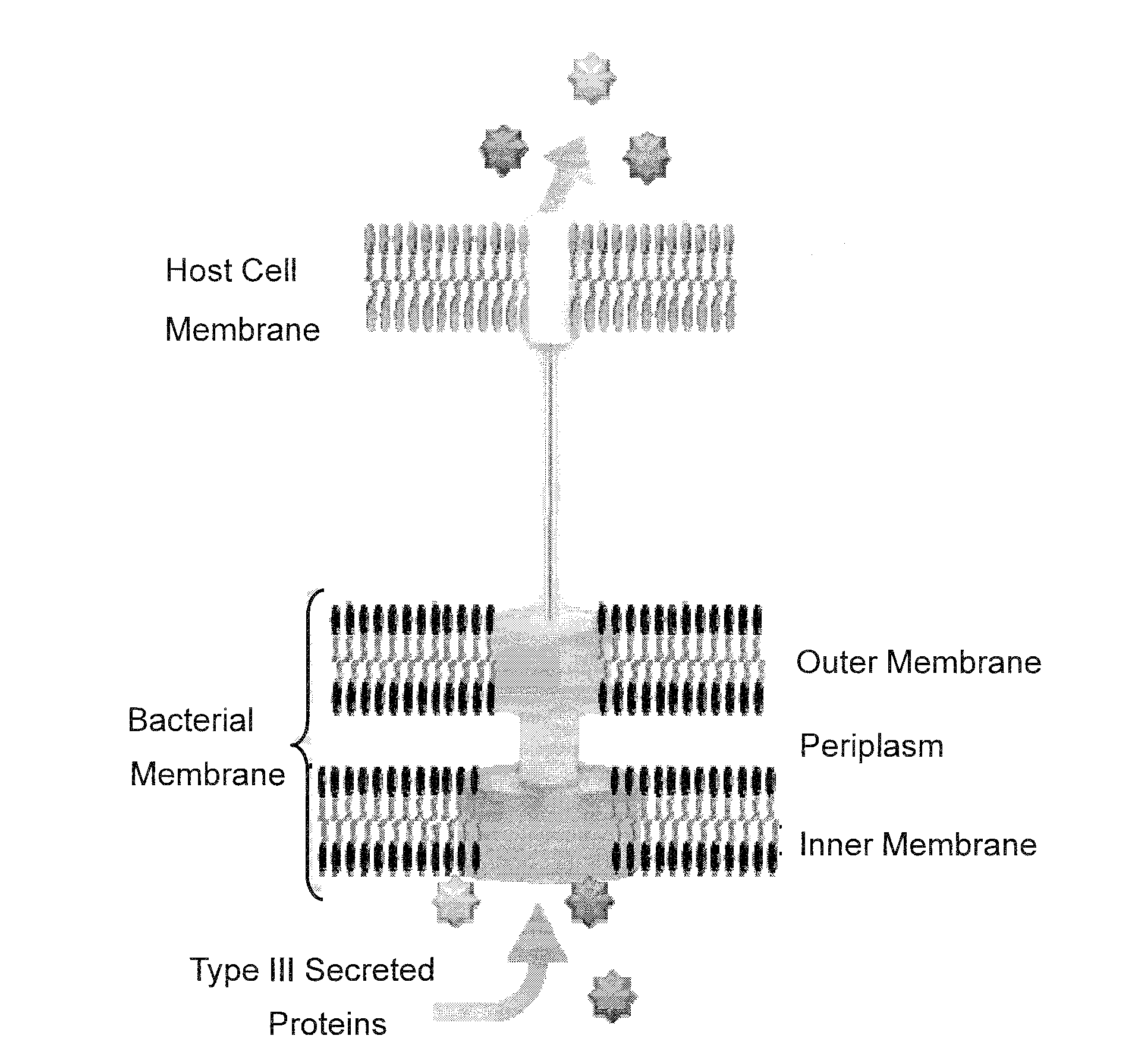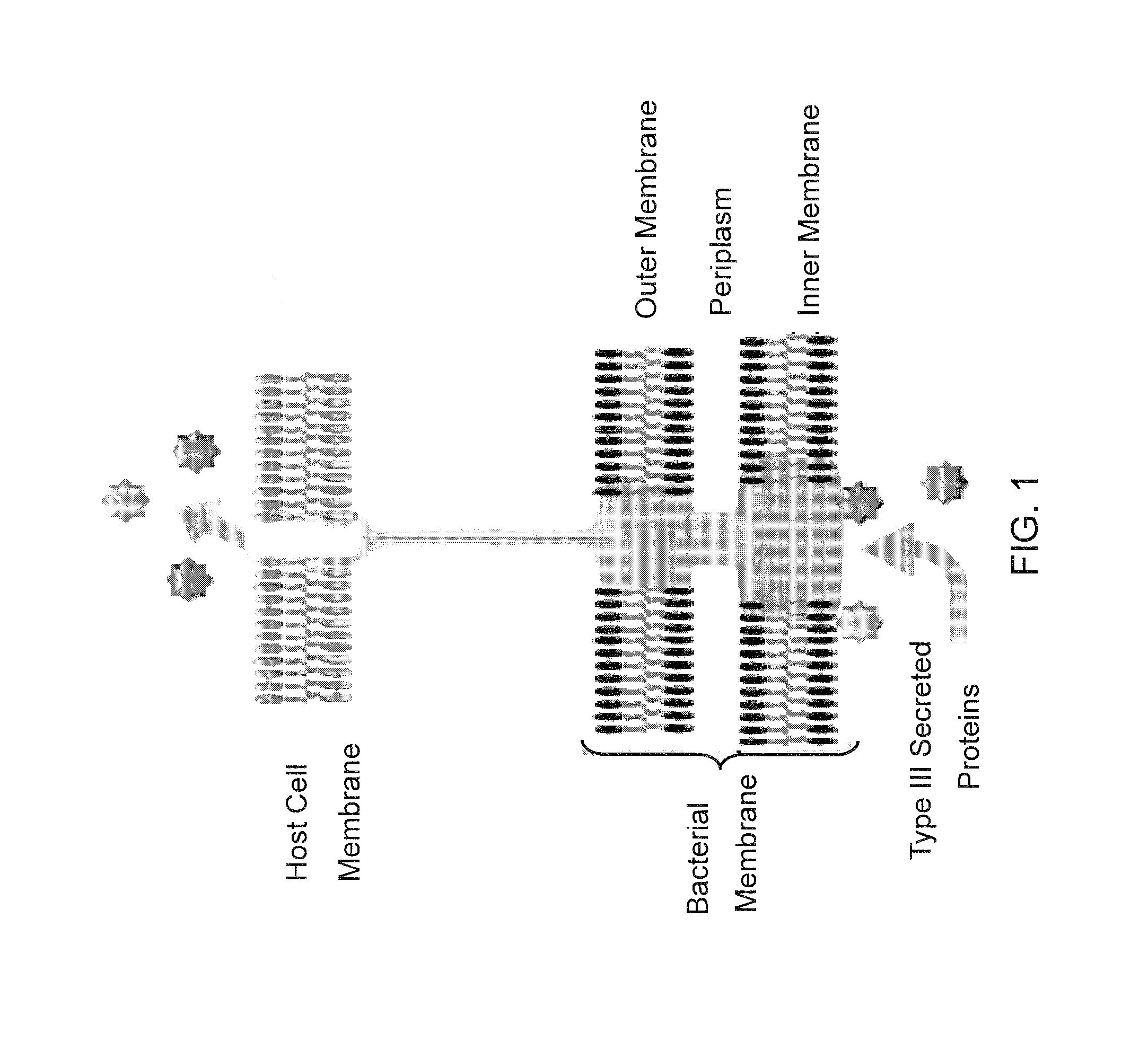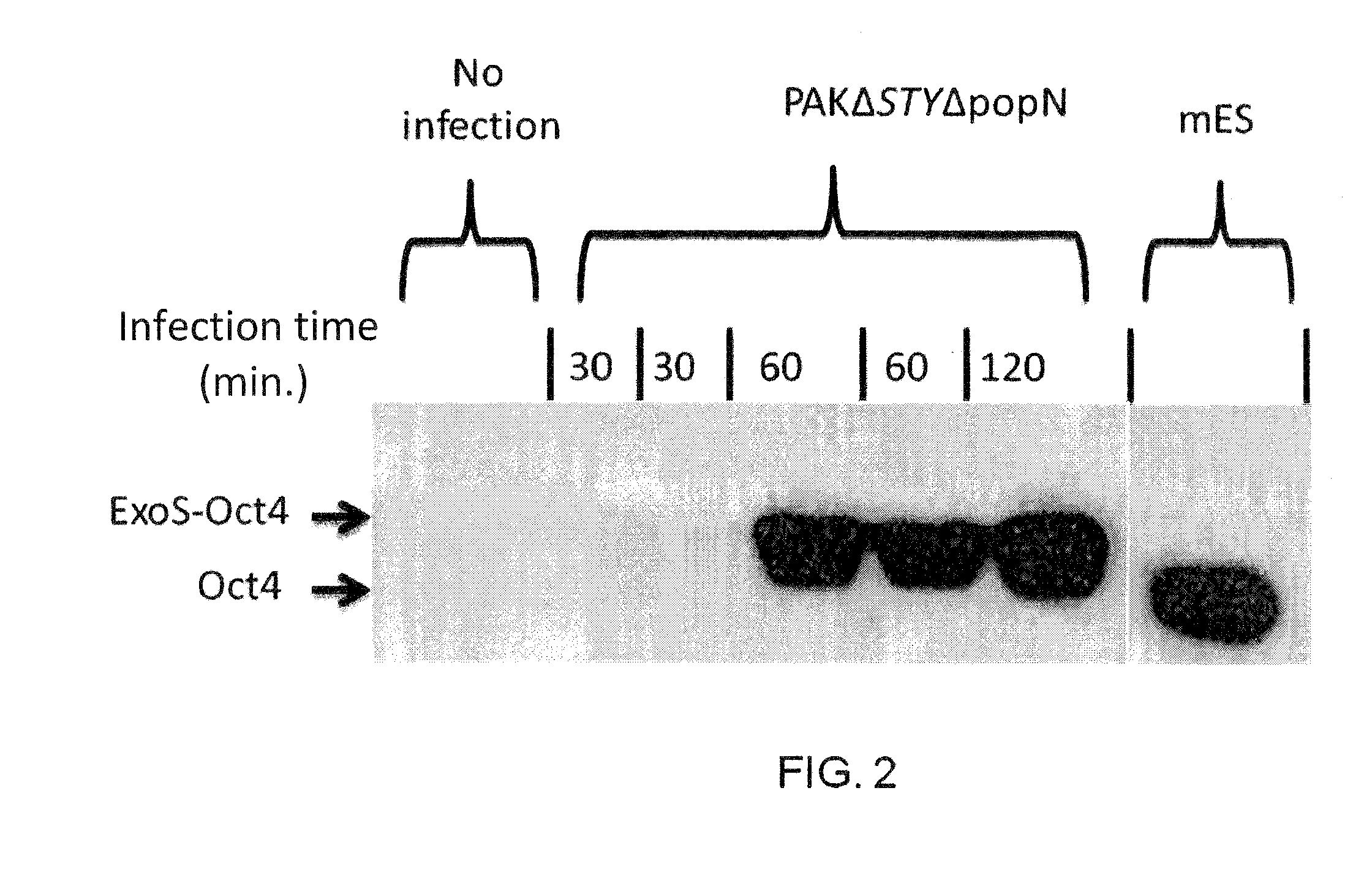Bacterial Mediated Delivery of Nuclear Protein Into Pluripotent and Differentiated Cells
a nuclear protein and pluripotent cell technology, applied in the field of gene engineering of bacteria for the delivery of differentiation factors into eukaryotic cells, can solve the problems of reducing the efficiency of the fusion process, reducing the number of adult stem cells, and comparatively limited in abundance, so as to reduce the toxicity of the host cell and retain the efficiency of the delivery system
- Summary
- Abstract
- Description
- Claims
- Application Information
AI Technical Summary
Benefits of technology
Problems solved by technology
Method used
Image
Examples
example 1
Mutant Strain PAKΔexoSTY
[0103]Virulence determinants of P. aeruginosa include toxins encoded on the exoenzyme S regulon. Three effector proteins of the ExoS regulon include ExoS, ExoT and ExoY (Yahr, et al., 1998). Using standing deletion procedures, Exo S, Exo T and ExoY encoding regions were deleted.
[0104]To minimize killing of the host cells, a mutant strain, PAKΔexoSTY, deleted of all three T3SS-dependent cytotoxins (exoS, exoT and exoY), was generated. Growth rate of the resulting strain is identical to that of wild type strain PAK. By a standard cytotoxicity assay (LDH release assay), the mutant strain lost more than 80% of its cytotoxicity toward MEF cells in a 3 hour infection assay (MOI 100) and displayed almost no cytotoxicity under the test condition of MOI 100 with one hour infection time.
[0105]To delete the three virulence genes, allelic exchange technique was utilized. For each gene, 1 kb fragments from upstream and downstream of the target coding gene were amplified b...
example 2
T3SS Mediated Injection of Cre Recombinase
[0110]To assess functionality of proteins translocated by the T3SS, Cre recombinase was fused behind the ExoS signal sequence (54aa), and a nuclear targeting sequence (NLS) was added between them. The mutant P. aeruginosa strain harboring the ExoS54-Cre fusion construct was used to infect a reporter cell line TE26 (Chang, 2003). The TE26 is a human carcinoma derivative which harbors a lacZ reporter gene with NLS. However, its upstream promoter (EF1α) was interrupted by the SV40 transcriptional terminator which harbors a loxP site on each end (FIG. 4). Removal of the transcriptional terminator by Cre mediated recombination of the two loxP sites resulted in constitutive expression of the lacZ whose product localized into nucleus due to the presence of NLS.
[0111]Reporter cells were infected with the bacteria, washed to remove excess bacteria and grown in DMEM+15% FBS plus antibiotics for 48 hours to allow the expression of the reporter gene. Th...
example 3
T3SS can Effectively Inject Effector Protein into ES Cells
[0112]Mouse ES cells were further tested for T3SS dependent protein injection. Two day old R1 ES cells were infected with the mutant P. aeruginosa strain PAKΔexoSTY harboring a plasmid encoding ExoS-FLAG fusion. The plasmid encoded ExoS had two point mutations which knocked out both GAP and ADP-ribosyltransferase activity, thus rendering it non-cytotoxic to the host cells. After two hours of co-culture at MOI 100, excess bacterial cells were washed off and the ES cells were subjected to immunohistochemistry staining for the translocated ExoS-FLAG using anti-FLAG monoclonal antibody.
[0113]As the images of immunohistochemistry show in FIG. 5, injected ExoS-FLAG protein is observed among majority of those subjected to the bacterial infection while ES cells without the bacterial infection showed no sign of ExoS-FLAG injection. Furthermore, the injected ExoS-FLAG localized within the cytoplasmic space, consistent with similar obse...
PUM
| Property | Measurement | Unit |
|---|---|---|
| Time | aaaaa | aaaaa |
| Time | aaaaa | aaaaa |
| Cytotoxicity | aaaaa | aaaaa |
Abstract
Description
Claims
Application Information
 Login to View More
Login to View More - R&D
- Intellectual Property
- Life Sciences
- Materials
- Tech Scout
- Unparalleled Data Quality
- Higher Quality Content
- 60% Fewer Hallucinations
Browse by: Latest US Patents, China's latest patents, Technical Efficacy Thesaurus, Application Domain, Technology Topic, Popular Technical Reports.
© 2025 PatSnap. All rights reserved.Legal|Privacy policy|Modern Slavery Act Transparency Statement|Sitemap|About US| Contact US: help@patsnap.com



